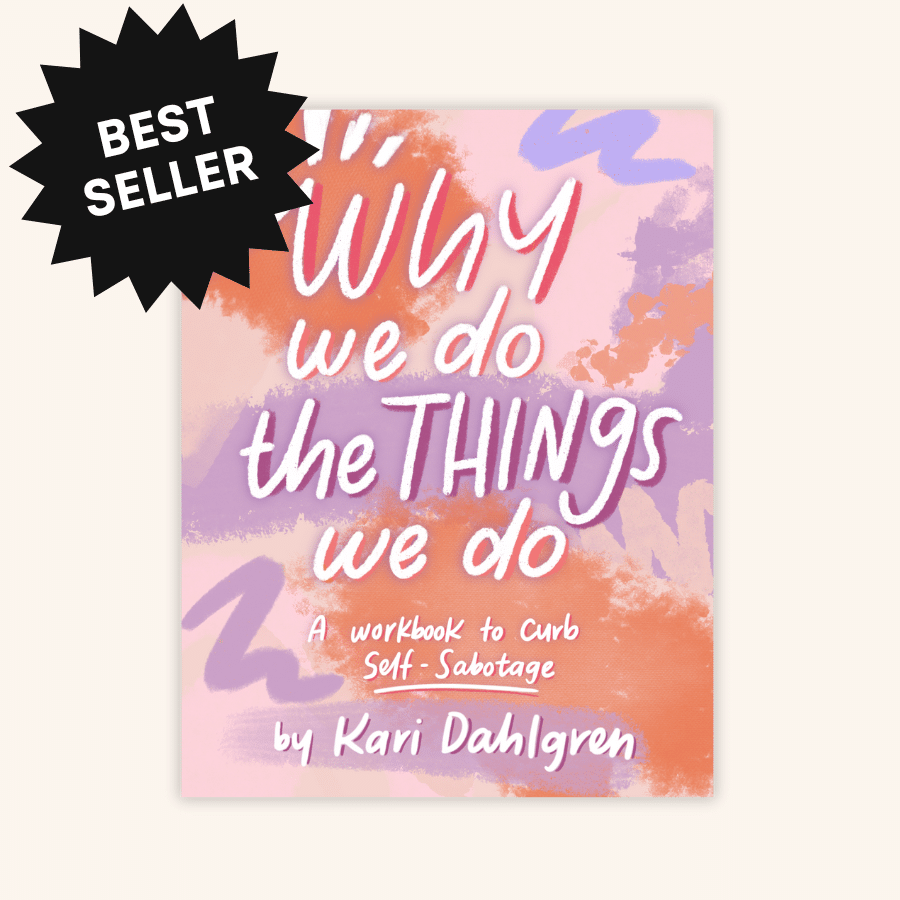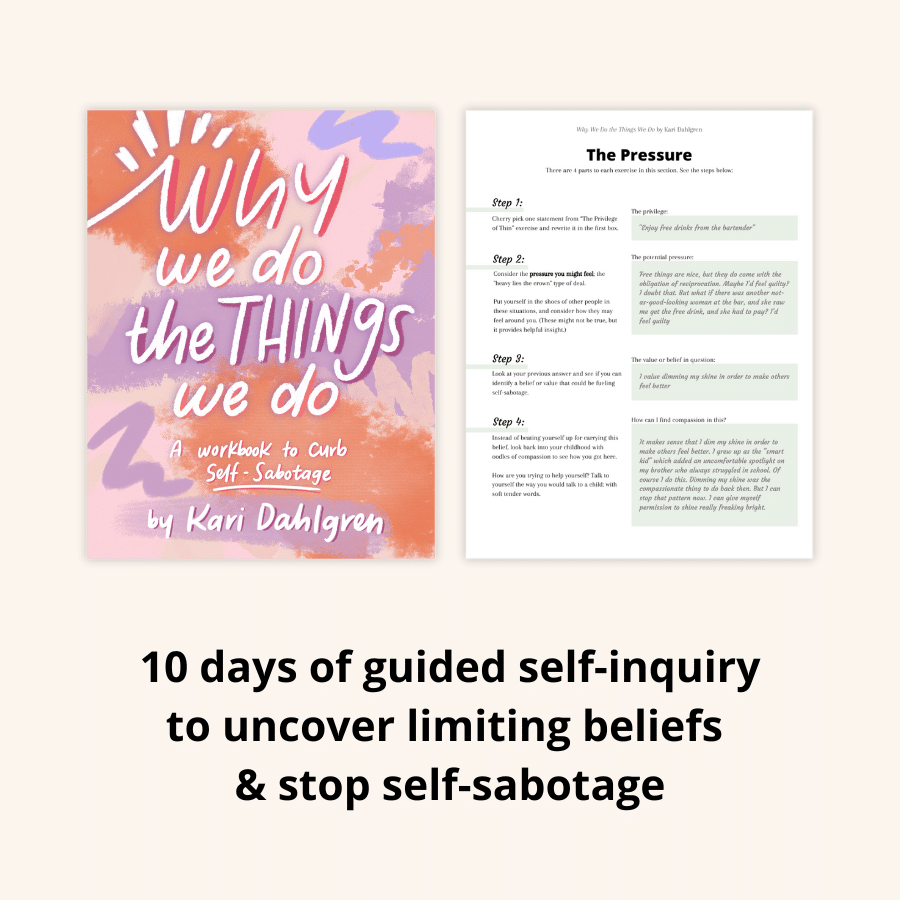
Are you tired of the endless cycle of dieting, only to find yourself still struggling with overeating? Have you diligently followed diets or exercise plans, yet self-sabotage anyway, leaving you feeling frustrated and defeated? It’s time for a different approach—one that goes beyond food and exercise, delving into the very core of your being.
Welcome to the home of Psycho-Spiritual Wellness—a path to stopping compulsive eating crafted for those who crave a deeper understanding of their emotional and even spiritual relationship with food. It’s time to address the root causes of overeating because, let’s face it, it’s not about discipline or food itself.
Through Psycho-Spiritual Wellness, I invite you to embark on a transformative journey that frees you from rigid diets that don’t work. Here, you won’t find any of that. Instead, I focus 100% on psychological and spiritual practices that unveil the root causes of struggling around food.
Before we dive into the Psycho-Spiritual Wellness Eating Guidelines, it’s crucial to understand why diets consistently fall short—and spoiler alert: it’s not your fault.
Prerequisite: Letting Go of Diets
If you’ve ever swung from rigid food rules to late-night binges, you’ve experienced one of the primary reasons why diets don’t work: the restrict-binge cycle. It’s not a character flaw. It’s not a lack of willpower. It’s biological and psychological backlash against deprivation.
When we chronically undereat—whether by skipping meals, counting every calorie, or demonizing carbs—our bodies notice. The hunger pathways in the brain light up, pushing us to seek out food, especially the high-calorie, hyperpalatable foods we’re trying hardest to avoid.[1]
One study compared calorie restriction to exercise and found that dieting alone caused a sharper increase in cravings, appetite, and compensatory eating.[2]
This means that food restriction poses a much steeper challenge to appetite regulation than movement does. And here’s the kicker: even when fat-free mass (e.g. muscle) is preserved through exercise while dieting, the body still downshifts metabolically, making long-term weight loss difficult to maintain.[3]
Meanwhile, deep in the hypothalamus—the part of the brain that regulates hunger and metabolism—neural circuits respond to restriction with stronger food-seeking behaviors.[4] If you’ve ever felt obsessed with food while trying your hardest to avoid it, this is why. It’s not self-sabotage; it’s survival.
Because dieting causes both biological and psychological backlash, many people find themselves stuck in a loop: restrict, binge, regret, repeat. If you’ve been losing and gaining the same ten pounds—and exhausting your willpower along the way—it’s not because you’re broken. It’s because the system is, and it’s time for a new one.
The Psycho-Spiritual Wellness Eating Guidelines: 3 Steps for Making Peace with Food
What could be a better way forward?
The Psycho-Spiritual Wellness Eating Guidelines offer a new path—one that helps you rebuild trust with your body and untangle the deeper roots of compulsive eating. These three steps aren’t about control or perfection. They’re about restoring connection.
- Eat exactly what appeals to you when you’re hungry
- Stop when you’re full
- Do the Stop, Drop, & Feel® when you want to eat without hunger
Each step is deceptively simple, but together they offer a powerful framework for healing—not just physically, but emotionally and spiritually, too. Let’s dive in.
1. Eat Exactly What Appeals to You When You’re Hungry
This first step is about rebuilding trust—with your body and with food. That trust starts with two essential practices: giving yourself full permission to eat what truly appeals to you, and learning to recognize your body’s natural hunger cues.
Permission to Eat
Permission to eat challenges the ingrained belief that certain foods must be earned or avoided. Instead, it invites you to respond to real hunger with the foods you actually crave. Of course, this can feel radical, especially if you have a long history of dieting or if certain foods still feel “off-limits.”
Maybe you’ve labeled carbs like pizza or pasta as dangerous because you’re afraid they’ll lead to weight gain or trigger a binge. But here’s the paradox: when you don’t allow yourself to eat the food you truly want, you often end up eating around your cravings—only to circle back to the original craving later. Often at night, with guilt, and past the point of fullness.
If you’re hungry and you want pizza, eat the pizza. If you’re hungry and want a half-soup and salad, eat the soup and salad.
When you honor your body’s hunger and cravings at the same time, you feel satisfied, and that has a powerful and positive effect on your relationship with food.
As many people (myself included) have learned firsthand, once you begin allowing yourself to eat the foods you’re craving—without guilt—you often end up eating less overall. And if you’re afraid of gaining weight by eating intuitively, that’s where trust becomes even more important. Because if you’re eating when you’re hungry and stopping when you’re full, your weight can regulate itself.[5], [6]

Physical Hunger
To follow this step, you have to be able to recognize physical hunger—which often gets muted or confused after years of dieting. Hunger doesn’t always show up as a rumbling stomach. It can feel like low energy, irritability, trouble concentrating, light-headedness, or even nausea. These are all signs that your body needs nourishment—not discipline.
As you start this process, you may not recognize these signals right away—and that’s okay. The goal isn’t to do it perfectly. It’s to begin listening again.
[Related: Learn the difference between physical hunger and emotional hunger]
[Premium content: I talk about Permission to Eat and What Hunger Feels Like—and dozens of other related topics—in my online course about eating psychology, Food Normal]
2. Stop When You’re Full
Once you give yourself permission to eat when you’re hungry, the next step is learning to stop at fullness. This is where many of us struggle, because the inability to stop at fullness is the very definition of compulsive eating. Don’t worry—I have specific advice for the inability to stop at fullness in step 3. But first, let’s talk about fullness itself.
Fullness, also known as satiety, is the sensation of satisfaction and contentment that arises when your body has received enough nourishment. Fullness may feel like a sense of abdominal fullness or pressure, a decrease in appetite or interest in food, and a general sense of satisfaction. Everyone experiences fullness differently, so it’s important to tune in and understand your unique sensations.
If you struggle with knowing when you’re full—because, like dieting, those sensations have been overridden and numbed by the restrict-binge cycle—focus on practice. The more you practice feeling your fullness, the more in tune you’ll become.
Again, it can feel scary to try to listen to your body when you feel unsure of your hunger and fullness signals. While it takes practice to plug into the signals of your body, the following step can support you in the interim. It can help address compulsive eating, too.
3. Feeling Your Feelings When You Want to Eat Past Fullness
Now that we’ve covered how to eat what appeals to you when you’re hungry and how to stop when you’re full, let’s talk about what to do when you want to eat but you’re not physically hungry. This is where the emotional side of eating takes center stage.
In my experience as both an eating psychology coach and someone living in recovery from compulsive eating, when there’s a pull toward food without hunger, there’s usually an uncomfortable emotion beneath the surface. And often, the connection isn’t obvious until you pause long enough to feel it.
However, when we stop to make space for these feelings, and we allow ourselves to fully feel them, the desire to eat beyond fullness fades. This is the premise behind my Stop, Drop, & Feel® method to stop binge eating:

Here’s how it works:
- Stop what you’re doing. Go to another room, if possible, and set a timer for two minutes. Promise yourself that you can still eat what you’re craving after the process is over. This keeps you out of restriction mode.
- Drop into your body and get curious. What are you feeling? Don’t overanalyze—just notice.
- Feel your feelings. Let them be here without trying to fix them. No judgment, just space.
The goal isn’t to avoid eating—it’s to understand what’s underneath the urge. When you pause long enough to check in, you begin to build the emotional regulation skills needed to stop compulsive eating over time.
At the heart of this is emotional tolerance—the ability to sit with discomfort without needing to escape it. When emotions feel too intense to bear, food often becomes the fast and familiar way out. That’s why emotional tolerance is such a vital skill in healing your relationship with food.
The Stop, Drop, & Feel method is designed to strengthen that skill. It helps you stay present with what you’re feeling, rather than reacting automatically. Over time, this rewires the pattern. You learn to meet your emotions instead of mute them—and with practice, the compulsion to eat without hunger begins to fade.
Getting Back to Feeling Normal Around Food
Emotional eating often hijacks your ability to listen to hunger and fullness cues. But when you build emotional tolerance, you begin to clear the noise—the guilt, the urgency, the mental tug-of-war—and reconnect with your body’s natural rhythm. The more you practice feeling your feelings without judgment, the easier it becomes to recognize true hunger, honor fullness, and trust yourself around food again.
This is how you return to feeling normal around food—not through control, but through connection.




After battling myself (and my weight) since the age of 4 (now 73), I think it’s time to be friends with me. Thank you for what you’re offering. At this moment, it’s like a surprise gift to me.
Me, too, Linda! At 64, I realize that since the age of 12 I have NEVER not been on a diet of some sort and/or bingeing (and later, worse!). Everything Kari said would occur, has. I’ve been on the trail for about 2 weeks. And there’s an ‘ouch’ around every corner. Since this startling epiphany, I have not weighed my body or my food and I haven’t restricted. Carry on, Sister…
If I get the workbook and the book, does it contain the information in these videos and links? I feel like I don’t know which to watch first. Thanks for your help.
Yes, the first section of the book outlines the entire foundation of Psycho-Spiritual Wellness, so it’s a nice catchall. The workbook is more for the inner work – less education, more action. 🙂
Just like to say I have started the SDF approach to my binges. I am learning but realise it will take time.
I already feel free from the burden of having to restrict certain foods from my eating. Dieting. Oh to live a life permanently free of the all time consuming thoughts in my head of what to eat and what not to eat.
Really thought provoking comments. Thank you.
Hi Freda! It sounds like you’re in the right place 🙂 getting to a place of not thinking about food every second of the day is exactly what we’re doing here. You’re in good company! Thanks for the comment. 🙂 And good luck with the SDf — I know it can be challenging, but sooo worth the effort. xo
Hi Kari! I want to ask you about not being able to recognize when I have to stop eating. After many years binge eating on a regular basis, I find that I only know I have to stop when my stomach hurts, because if there is enough empty space, I don’t quite realize if I’m still hungry or not. Does it make any sense? Will it ever get back to how it’s meant to be? Thank you for your work, it really gives me hope about my journey and my capacity to overcome self harm.
Hi Belen! Yes, what you are saying makes sense, and I’m sorry to hear you’re struggling. As you continue to work on trusting your body again, I think you will heal in all ways: mind, body, and spirit. Let me know how you’re doing since you last left this comment!! x
For being such a young soul you are very wise! Thanks for the work you have done to put together your program. I believe you have definitely hit on what needs to be done to stop the habit of binge eating. I appreciate that we can benefit from a free crash course too. Shows you are doing this because you want to help people in need ASAP and not for the money.
Thank you Margaret! I appreciate that. I hope you enjoy the free crash course and hit reply to an email some day! I do this for the love of it, and that means I love to hear feedback!! xo